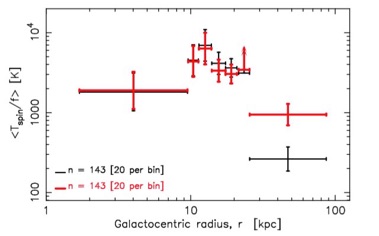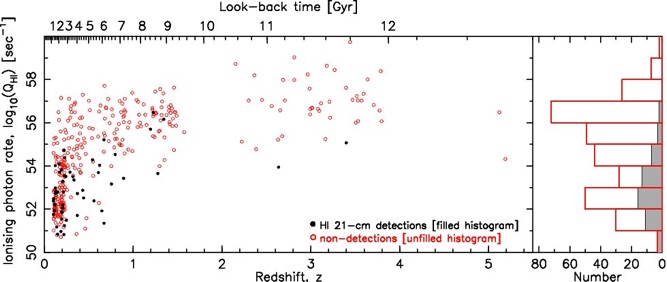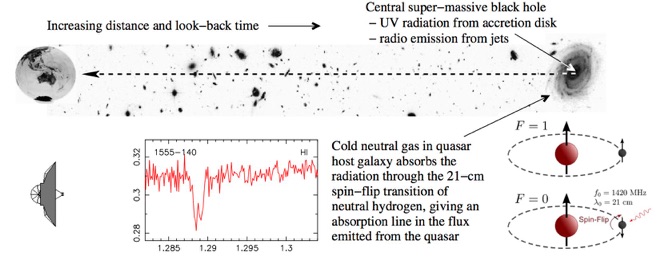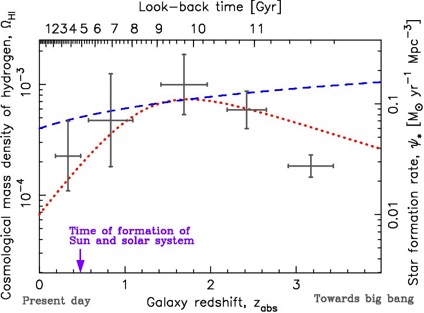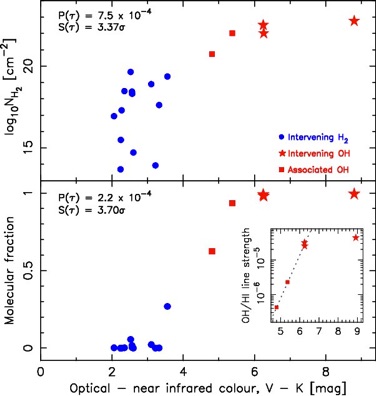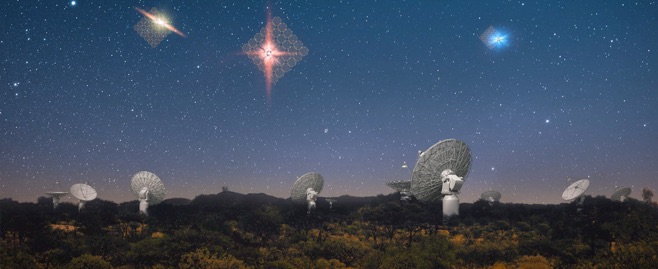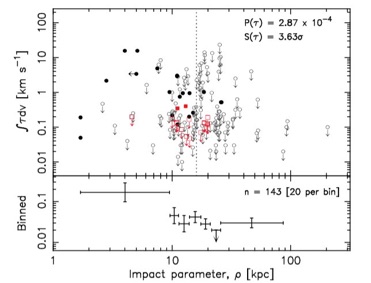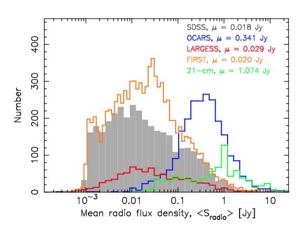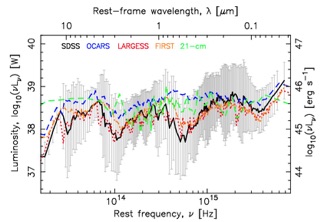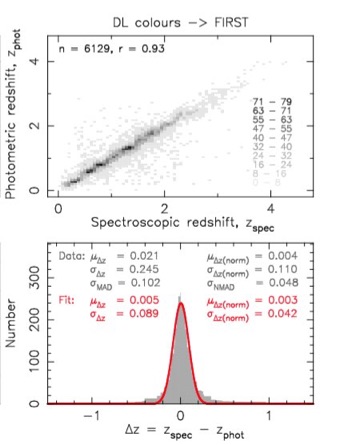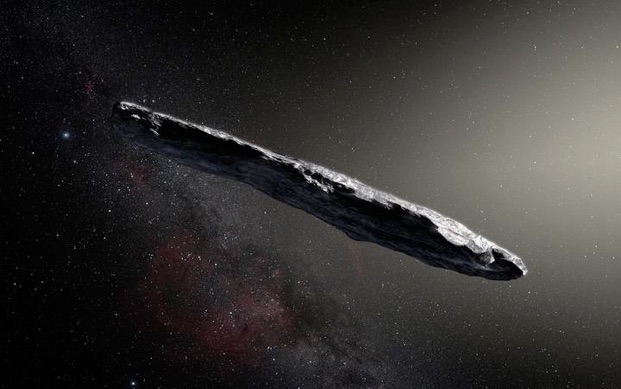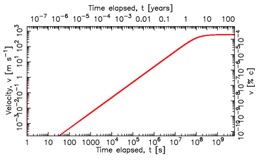Adding the latest data (red squares) and applying a survival analysis, in order to utilise the upper limits to the non-detections (unfilled symbols), we confirm a significant anti-correlation (3.63σ, Curran, 2020).
Comparing the 21-cm absorption strength with the total atomic hydrogen column density yields the spin temperature of the gas, which is significantly higher than Galactic values. Furthermore, while the temperature in the Milky Way exhibits a constant 250 - 400 K out to 25 kpc, we find a peak in excess of 3000 K at r ~ 15 kpc, which is where the ionised gas (HII) regions reside in spiral galaxies. From the neutral gas density distribution, we find that the Strömgren spheres around young, hot (OB) stars in the outer disk have radii comparable to the width of the disk, supporting the hypothesis that the HII regions are the result of star formation in the spiral arms.
